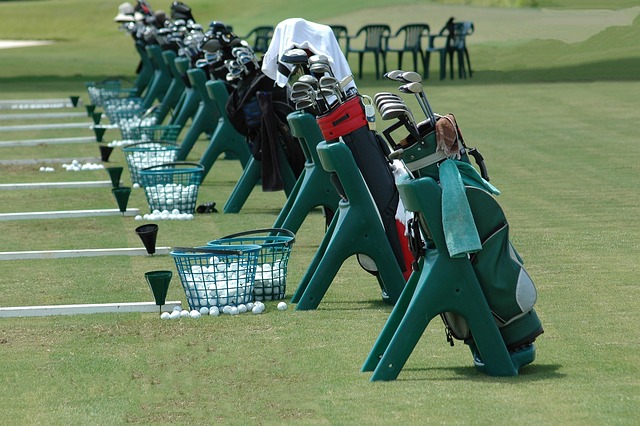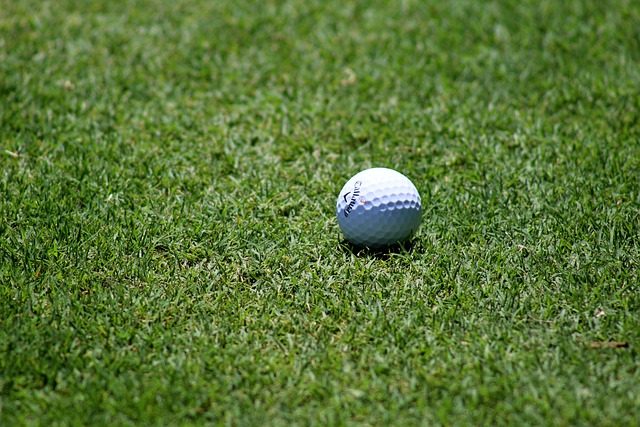Golf is an exciting sport that brings countless hours of entertainment and enjoyment. Unfortunately, it also carries its fair share of risks, as it can lead to severe golf-related injuries.
Whether it’s due to overuse or incorrect form, these injuries can be painful, debilitating, and costly.
Introduction
The purpose of this article is to provide readers with information regarding the common golf-related injuries, prevention strategies, and recovery methods. Knowing how to prevent and treat these injuries is essential for any golfer who wants to stay safe, healthy, and injury-free on the golf course.
To begin, let’s take a look at the risks of golf-related injuries. Golf is a repetitive sport that requires the use of specific muscles and joints. While the continuous motion can provide a great cardiovascular workout, it can put strain on the muscles and joints. This can result in different types of injuries, such as elbow injuries, back injuries, wrist injuries, shoulder injuries, and knee injuries.
When it comes to preventing and recovering from these injuries, there are a few key strategies. For prevention, golfers need to make sure they’re doing proper warm-up exercises, using the correct form, wearing the right gear, and drinking plenty of fluids.
When it comes to recovery, there are also several key strategies that should be employed. Rest is important, as it allows the body to heal. Ice therapy can help to reduce swelling and inflammation. Strength training and proper nutrition can help to strengthen the muscles and joints and speed up the healing process. Finally, if the injury is severe, it’s important to seek professional medical help.
Now that we’ve got an overview of the risks and strategies for prevention and recovery, let’s take a look at the common golf-related injuries and what can be done to prevent and recover from them.

Common Golf Injuries
Golf is a sport that requires a lot of physical exertion and can lead to injuries if you don’t take the necessary precautions. While most golfers will remain injury-free, it’s important to understand the common golf injuries and how to prevent and recover from them.
Elbow Injuries: One of the most common golf injuries is elbow injuries, often referred to as “golfer’s elbow” or “tennis elbow.” This type of injury is caused by overuse, usually from improper form or technique. Golfer’s elbow is usually characterized by soreness, sometimes accompanied by swelling or tenderness in the area around the elbow. To prevent or reduce the severity of golfer’s elbow, it is important to use the right form and technique when swinging the golf club.
Back Injuries: Poor posture and technique can lead to back injuries on the golf course. Back injuries often result from incorrect posture during the swing, such as bending too far forward, not keeping the spine straight, and not rotating the hips during the swing. To prevent back injuries, golfers should focus on proper form and technique. Additionally, it is important to maintain adequate flexibility and strength in the back to reduce the risk of injury.
Wrist Injuries: Another common golf injury is wrist injuries. This type of injury is often caused by an improper grip or incorrect swing mechanics. To reduce the risk of wrist injuries, golfers should focus on maintaining a strong grip and using the right technique during the swing. Additionally, it is important to stretch regularly and warm up prior to playing.
Shoulder Injuries: Shoulder injuries can be caused by a variety of factors, including poor posture, lack of flexibility, and incorrect swing technique. To reduce the risk of shoulder injuries, golfers should focus on maintaining proper posture, stretching, and performing regular shoulder strengthening exercises. Additionally, it is important to use the right form and technique during the swing.
Knee Injuries: Knee injuries are one of the most common golf injuries. This type of injury is often caused by incorrect posture or swinging technique. To reduce the risk of knee injuries, golfers should focus on maintaining proper posture and using the correct technique during the swing. Additionally, it is important to perform exercises to strengthen the muscles around the knee and to maintain adequate flexibility in the area.
By understanding the common golf injuries and following the proper prevention and recovery strategies, golfers can reduce their risk of injury and play at their best.
Prevention Strategies
Golf is an increasingly popular sport, but it can also be a source of various injuries if not approached carefully. To stay injury-free on the golf course, it is important to be aware of the common risks, and to practice prevention and recovery strategies. Understanding how to prevent golf injuries before they occur is the key to staying healthy on the course.
One of the most important prevention strategies is performing a dynamic warm-up before playing golf. Warm-up exercises are important for preparing the muscles and joints for the upcoming physical activity. Dynamic warm-up exercises help to raise the body’s core temperature, which increases flexibility and prepares the body for the physical demands of golf.
It is also important to practice proper technique to prevent golf injuries from occurring. Good form and posture will help to reduce the amount of stress placed on the body during a golf swing. It is important to use the correct grip and stance, and to concentrate on maintaining good balance.
It is also important to wear the right type of gear while playing golf. Shoes with plenty of cushioning and arch support are important for absorbing the shock of the golf swing and providing stability during the golf swing. Proper clothing should also be worn to keep the body comfortable and to prevent any skin irritation.
Adequate hydration is also an important part of injury prevention. Dehydration can result in cramping and fatigue, which can lead to injuries. It is important to drink plenty of water before, during, and after playing golf.
By following these few simple strategies, it is possible to reduce the risk of golf-related injuries and enjoy a safe and injury-free round of golf.
Recovery Strategies
When recovering from a golf-related injury, it is important to take a comprehensive approach. Rest is one of the most important components of recovery and should be the primary focus. Taking a few days off from golf and other strenuous activity can help the affected area heal faster. Additionally, ice therapy can be beneficial for reducing inflammation and pain from an injury.
Strength training is also an important part of injury prevention and recovery, as it can help build the strength of the muscles and joints. This can help to reduce the likelihood of future injuries. Additionally, proper nutrition is essential for recovery. Eating foods with anti-inflammatory properties, such as leafy greens, nuts, and fatty fish, can help reduce inflammation and swelling. Additionally, taking supplements to aid in healing, such as glucosamine or chondroitin, can help to speed up the recovery process.
Finally, in the case of more serious injuries, it is important to seek the help of a professional. For example, visiting your doctor or physical therapist can help to diagnose and treat the injury correctly. They can also provide additional guidance and strategies for injury prevention.
Recovery from a golf-related injury is not only about healing the affected area but also about taking proactive steps to reduce the risk of future injury. Taking regular breaks from the course and monitoring your progress can help to identify any potential warning signs of a developing injury and avoid it before it becomes more serious. Additionally, seeking professional help for serious injuries can ensure that the area is healing properly. Following these strategies can help golfers stay fit and healthy while on the course.

Conclusion
Golf can be a great recreational activity, but it also carries the risk of certain injuries. Though some of these injuries may be minor, others can be serious and require professional medical help. Fortunately, there are several strategies that can be taken to help prevent and recover from golf injuries.
Warm-up exercises can help prevent elbow, back, wrist, shoulder, and knee injuries. Wearing the right gear and practicing proper form can also reduce the risk of injury. Adequate hydration is also essential for injury prevention while on the golf course.
If an injury occurs, rest is the primary recovery strategy. Ice therapy can help reduce pain and swelling. Strength training and proper nutrition can help build strength and reduce inflammation in the area of the injury. In the event of a more serious injury, it is important to seek professional medical help.
It is important to take regular breaks when playing golf and be aware of possible signs of injury. Monitor your progress as you practice and take the necessary steps to prevent any injuries. Remember that while golf is a great recreational activity, it is important to take preventative measures and be aware of how to recover from any injuries that may occur.

